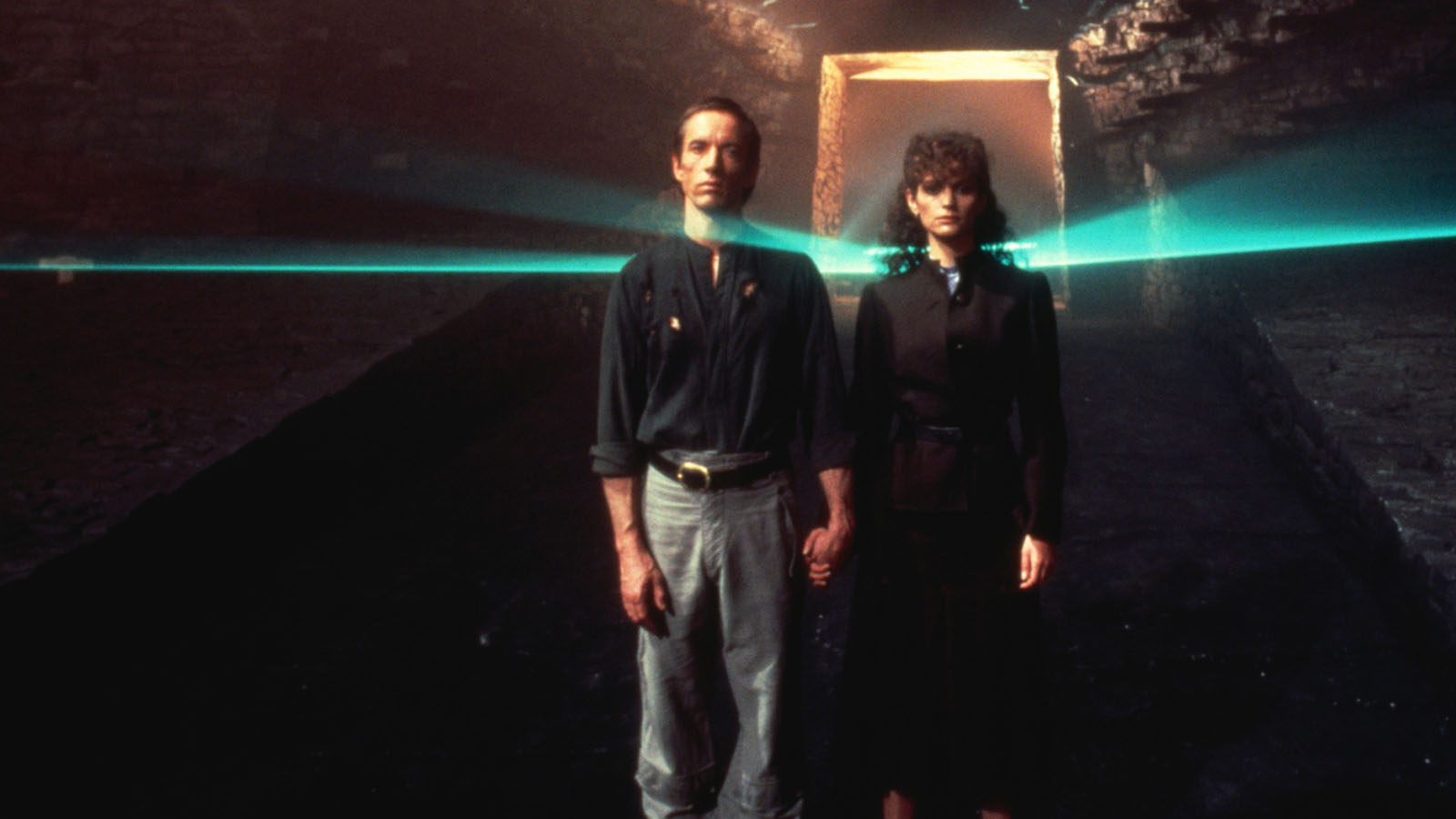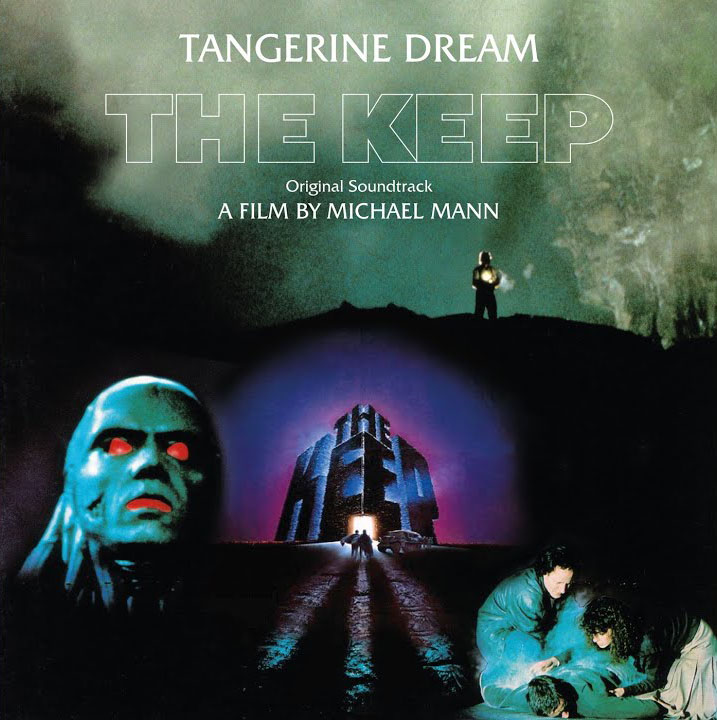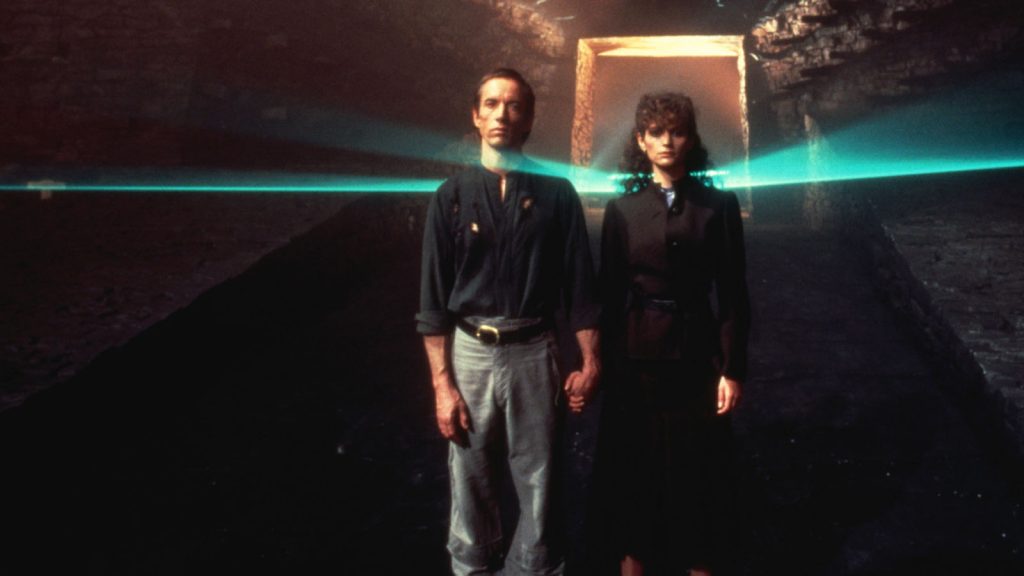
Within Michael Mann’s oeuvre of slick urban crime dramas and thrillers, his lone horror-fantasy film The Keep is an overlooked outlier, virtually ignored since its initial release in 1983. Plagued by the sudden death of visual effects supervisor Wally Veevers early in postproduction, studio interference that pruned the initial runtime by more than half, and years of conflict over the music rights, the film and its soundtrack, by the legendary German group Tangerine Dream, remain largely inaccessible. Enterprising fans can now view an okay version of the butchered theatrical cut for rental on Amazon and YouTube in the U.S., and on Netflix in the UK and Ireland. Tangerine Dream also released their soundtrack album a year ago, as part of a 10-CD box set, although only a handful of the songs on that record made it into the film. Listening to the fan-produced “original” soundtrack uploaded to YouTube remains the most faithful and cost-effective option.
The story of The Keep, both behind the scenes and in the script, is a certifiable mess. With so many missteps and delays in the production, the resulting film doesn’t make a lot of sense. Based on a 1981 novel by F. Paul Wilson, the plot opens during WWII, when a group of Nazi storm troopers occupy a citadel in a small Romanian village and accidentally release an ancient evil that was previously trapped in the “Keep.” Jürgen Prochnow plays a Wehrmacht captain, a purportedly “humane” Nazi pitted against Gabriel Byrne’s unredeemable S.S. officer. Both are forced to watch in horror as their men are literally ripped apart by the evil Keep monster (full name: Radu Molasar). Scott Glenn co-stars as the human embodiment of a positive supernatural force (full name: Glaeken Trismegestus), while Ian McKellen plays a sickly Jewish historian who helps reanimate the evil Keep monster piece by piece with each kill, proto-Hellraiser style. It’s a lot to take in, and the abundance of choppy edits have rendered the plot unnecessarily confusing, while the philosophy behind it—of ancient evil and its contemporary manifestation in human hatred—is overly simplistic and often borders on poor taste.
All of its literary messiness aside, The Keep survives as a formally stunning, eerie, and atmospheric film. Its numerous montages and vivid set pieces represent a distillation of Mann’s greatest talents. Paired with Tangerine Dream’s uncanny soundtrack, the film is a marvel of sound and vision. For all of the hesitation and setbacks behind the scenes, the images on-screen are strikingly assured, framed in the gloriously wide 2.35:1 aspect ratio with carefully chosen sets and models that correspond to an epic scale. Mann’s exquisite use of fog, neon lights, and slow motion suits the film well, enhancing the source novel’s elements of fantasy and gothic horror. From the very start of The Keep, Tangerine Dream creates an ethereal tone, flooding the soundtrack with synthesized music. Sounds of thunder and echoing whispers add to the opening soundscape of electronic drums and chugging sequencers, as Prochnow’s captain and his fellow officers ride through the Carpathian Mountains on giant military vehicles. Kit Rae, a fantasy artist, sword designer, and longstanding expert on The Keep film and its soundtrack, argues quite convincingly on his website that the opening track was greatly influenced by Brian Eno and David Byrne’s “Mea Culpa,” which appears on their 1981 album My Life in the Bush of Ghosts. It’s a compelling theory, though it’s never been addressed by any of the parties involved.

After a few minutes, the first track segues into a minimal, creepy piece of music composed of drawn-out synthesized strings and distorted choir vocals. Set against cinematographer Alex Thomson’s fogged-up shots of the scenic Romanian village, this particular sequence recalls another memorable cinematic association spanning at least six films: that of director Werner Herzog and the German band Popol Vuh, especially their first collaboration, Aguirre, the Wrath of God (1972), which features Florian Fricke’s Mellotron-like “choir organ” on the soundtrack as Klaus Kinski’s Aguirre trudges into a tropical wilderness—a possible influence for both Michael Mann and Tangerine Dream.
Contemporaries with Popol Vuh on the German “krautrock” scene, Tangerine Dream have been incredibly prolific since their formation in the late ’60s. Their career as soundtrack composers effectively took off in 1977 with the release of their first Hollywood film score, for William Friedkin’s Sorcerer. That soundtrack is still highly regarded by fellow musicians and filmmakers who cite the album as a major influence on their own work, with John Carpenter being one of the band’s most enthusiastic acolytes. Michael Mann first employed Tangerine Dream in 1981 to score his debut feature, Thief, and claimed that he listened to their earlier albums Alpha Centauri (1971) and Phaedra (1974) throughout the production. Electronic music was still a novelty in the U.S., and Mann enjoyed the additional benefit of using the band’s equipment to process sound effects and incorporate them into the score, such as the sound of waves crashing in Thief and the thunder woven into the opening track of The Keep.
Mann posed a few requests during his second collaboration with the band, like asking them to cover a 16th-century Christmas mass originally composed by Thomas Tallis. Alternately titled “Gloria” or “Puer Natus Est Nobis,” the arrangement by Tangerine Dream highlights a female vocalist backed by a vocoder-inflected choir with plenty of reverb and synth-organ. The song plays immediately after the Keep monster rescues Alberta Watson’s character, Eva, from an attempted rape, using his supernatural powers to cause her attackers to self-combust. In an oddly peaceful and majestic sequence, the monster carries the unconscious Eva as they are enveloped in backwards-moving smoke. The overlapping effects of the synthesized music match the visual effects on-screen, creating one of the trippiest set pieces in the film.
The second song that Mann requested the band cover was actually a children’s song: Howard Blake’s “Walking in the Air,” from the soundtrack to the popular animated short The Snowman (1982). Bypassing the original’s angelic vocals, Tangerine Dream replicated the melody on synthesizers and slowed it down, teasing out the essential melancholy of the children’s tune. Once a song about a young boy flying hand-in-hand with a snowman, “Walking in the Air” was transformed by Tangerine Dream into a fist-pumping fantasy-rock anthem. The track continues to play over the end credits, adding some needed ballast to an unfortunately stilted closing scene. Mann had intended to film an epic face-off between the opposing supernatural forces of Radu Molasar (the Keep monster) and Glaeken Trismegestus, but after Veevers’s death, the remaining team was unable to finish the scene without him.
Mann did a respectable job on his own, taking out Molasar with a sustained blast of Glaeken’s supercharged talisman weapon, followed up with more fog, more lasers, and extra wind-tunnel effects. Frankly, it’s a beautiful scene, and Tangerine Dream’s score helps guide the film into a pleasingly puffed-up ending. The conclusion, like the rest of The Keep, doesn’t make complete sense, but the music imbues the scene with a successful crescendo using the false emotional triumph required of a gauzy ’80s wannabe blockbuster. In spite of the film’s initial poor reception and limited release, The Keep has since grown into a cult favorite, with fans calling for a remaster that will probably never materialize. The soundtrack has proven even more influential, echoing in countless films and TV shows throughout the decades. John Carpenter and Alan Howarth, Claudio Simonetti of Goblin and Daemonia, Fabio Frizzi, Vangelis, and even Cliff Martinez are just a handful of composers who are cut from the same cloth, and have applied similarly synthesized scores to what are now considered horror classics.

is the host of “No Pussyfooting,” an online radio show on www.kpiss.fm. She is the editor of Paul Verhoeven: Interviews (UPM) and has contributed to Film Comment since 2006.
The directorial debut of veteran character actor Charles Martin Smith, Trick or Treat (1986), tells a story grounded in rites, rituals, and rock. Its inaugural sequence, a bravura portrait...
BY JOSÉ TEODORO | October 31, 2023
Consider the Dies Irae. Eight dire notes to remind you that you are going to die. This musical phrase from a 13th-century plainchant about Judgment Day booms famously over the opening helicopter shot in The Shining.
BY TOM PHELAN | July 26, 2024
One need only watch a few moments of Peter Strickland’s films to realize that the British-born, Hungary-based director is a stickler for detail.
BY MARGARET BARTON-FUMO | June 24, 2022

This pre-Code offering packs a lot of story into its typically brisk running time, with several plot threads weaving together a (not always successful) tapestry of spooky and criminal doings.
READ MORE >
BY ANN OLSSON | Month 00, 2021

In what could be the fastest-resulting rape revenge movie, a drunken lout brutally forces himself on Ida, the young woman who doesn't return his affections, during a party over Labor Day.
READ MORE >
BY LAURA KERN | Month 00, 2021

Beast is a lot of movies in one package - fractured fairy tale, belated-coming-of-age story, psychological drama, regional horror film - but above all it's a calling card for its leading lady, Jessie Buckley.
READ MORE >
BY LAURA KERN | Month 00, 2021